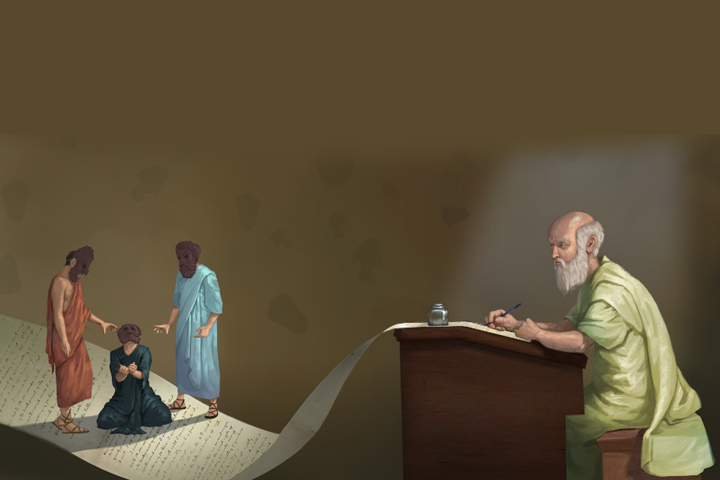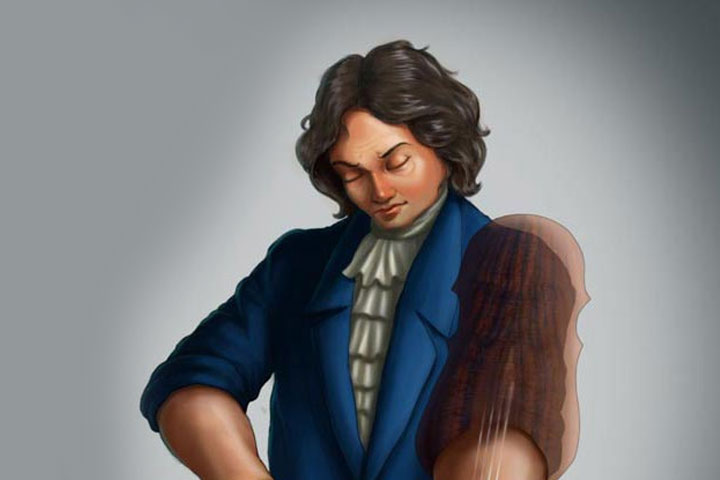
Every waking moment, we find ourselves hooked on to our gadgets from the smartphone which on account of e-mail has replaced the friendly postman, to the surveillance system that has replaced the watchman, the washing machine with fuzzy logic, the air conditioner with a timer counting hours as we drift asleep, the list goes on… This techno–electronic revolution has taken our life by storm and has gripped us to an extent that we feel alienated without the security of our laptop interacting with us on account of its logical programming. Can a machine display intuitive intelligence? Can a machine be programmed to love unconditionally like a mother? Can the robot designed to wreak havoc in the abstract world, turn the tables on its creator? Can a scientist play GOD if he simulates creation in a test –tube? These were the range of enigmatic questions that germinated in the mind of a genius mathematician, cryptanalyst, self- taught engineer and biotechnological researcher called Alan Turing. The conceptualization of “thinking machines”, that are universal in their application was masterminded by a man who was ahead of his times and wanted to pen answers in black and white to the questions that edged in shades of grey… On the 25th of May, 2011, U.S. President Obama, while addressing the British Parliament, gave Alan Turing the same stature as Olympians like Newton and Darwin, rightly known as distinguished British contributors to Science. This honour perhaps justifies the statement that Alan Turing literally catalyzed the forward leap of mankind into the realms of the digitization and automation of mechanical processes.

the aristocratic upper class of the british raj
Julius Mathison Turing belonged to an era when India was the goose that laid golden eggs, and the prized jewel of the British Empire. The business of proliferation of the Raj led to the birth of a class of educated administrators who served British interests in the colonies. Julius Turing aspired to rise to this stature when he appeared for the Indian Civil Service and stood seventh out of 154 applicants in the examination of 1894. He served the southernmost districts of India for a decade, taking charge of irrigation, agriculture, sanitation etc. in the capacity of Magistrate and Assistant Collector of the Presidency of Madras. In April 1907, he made a voyage to England in search of a suitable bride. He met the vivacious Ethel Sarah Stoney, a prospective partner who had a similar educational background and was the daughter of the Chief Engineer of the Madras Railway in India. The couple tied the nuptial knot on 1st October, 1907, in Dublin following which they returned to India.
Their first child, John, was born on 1st September, 1908, at the bungalow of his maternal grand-parents at Cunoor, India. Life went on as usual and Ethel Turing was on her way to motherhood for a second time in the autumn of 1911. In the summer of 1912, Mr. Turing arranged for an extended leave from his administrative duties to facilitate the birth of his younger son Alan, who was born in a maternity home in Paddington, London on 23rd June, 1912. Mr. Turing soon resumed his duties in India, leaving behind his wife and two sons as the scorching Indian heat was unbearable for the kids. Due to the professional commitments of Mr. Turing, his wife journeyed back to India in September 1913.This meant that 4 year old John and 6 months old Alan were separated from their mother and left behind in England in the foster care of Colonel and Mrs. Ward who lived at a sea-facing apartment at a small town called St.Leonards-on-Sea. This weaning away of children from the tender protection of their parents at this delicate juncture of early childhood was the price paid by the family for the cushy comforts of serving in the British Empire. The environment at the Wards was far from stimulating and the children spent their time either walking on the beach or at children parties and nursery games by the fireside, under the supervision of a nanny.
Alan grew to be a self-willed toddler asserting his naughtiness and a disdain for social duties and the requirements of obedience and hygiene demanded of him. Even at such a young age, he was known for his integrity and passion for a literal adherence to the rules of a game. He would storm out if his nanny fabricated her moves in order to let him enjoy an easy victory. Alan’s inquisitive nature can be gauged from the fact that he planted his toy soldiers with broken arms to verify if they developed a new set of limbs! In the spring of 1915, Ethel Turing returned to England to spend time with her sons and was delighted to meet Alan who had just started to speak in a screechy tone. For a few months, the boys stayed with their mother and bonded over family outings.
In the midst of the World War I in 1917, Mrs. Turing braved the U-Boat siege of the First World War on her way back from India and greeted a visibly subdued Alan. She immediately decided to spend time with him, having arranged for her elder son John to start formal schooling at Hazelhurst. Alan amazed her by exhibiting proficiency in reading as he taught himself to read in barely three weeks by referring to a book, “Reading without tears” at the tender age of 5. He did not have an instinctive sense of left and right and made a little red spot on his left thumb which served as the ‘knowing spot’.
Mrs. Turing was a devoted church-goer, and Alan inevitably accompanied her to “the church of bad smells” expressing his disdain for the smell of incense. He often stopped at lamp-posts and identified their serial numbers, displaying a natural affinity for numbers. The inflation caused by the War and the political upheaval of the Russian Revolution caused a strain on the family’s finances. Mr. Turing was thrifty and saved every penny in order to be able to afford a public school education for his sons. The opportunity cost of having a public school education bestowed on them was that the boys never had pocket allowances for the toy steam engines they lusted for. Their only luxuries were the cinema, the ice-rink and their Scottish holidays when they briefly united with their parents in what was a welcome respite from the dreary routine at the Ward’s Lodge.
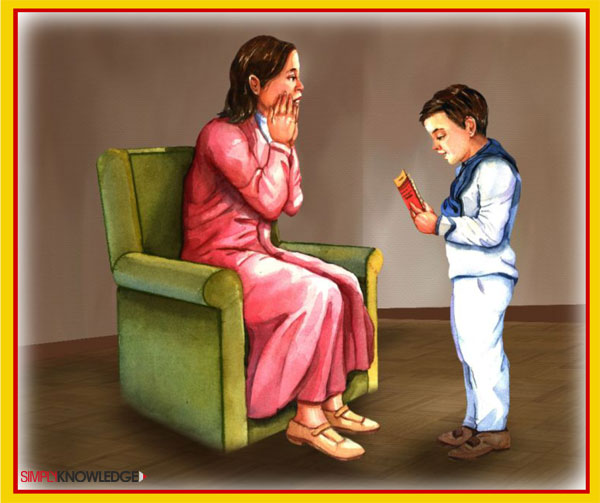

the wonder years
Alan was required to take an entrance exam to secure admission in a public school, hence Mrs. Turing admitted him to a private day school called St. Michael’s, in the summer of 1918. He disliked Latin and wrote illegibly, sporting ink-stained fingers and uniforms. It seemed as though fountain pens squirted ink automatically in Alan’s presence! During his leisure hours at the Ward’s, Alan hankered for time fruitfully spent studying maps in an atlas which was a cherished birthday present. In the summer of 1919, the family went for a luxurious vacation to North-West Scotland. Alan’s keen observation amazed his parents when, at the age of 7, he skillfully observed the flight path of bees and then by plotting the intersection point directed himself to the hive. His little Nature Study book stimulated his curiosity and he was engrossed concocting recipes for alleviating bee stings. The holiday ended with a three year separation from his parents who sailed back to India and his brother John who joined his school Hazelhurst. This traumatic loneliness took its toll on Alan who was transformed into a withdrawn and unsociable boy. When his mother sailed back to England in 1921, she was alarmed to see the stagnation in Alan who could not even perform simple division at the age of 9. She was empathetic towards her son and encouraged him to bounce back to his former self.
In January 1922, at the age of 10, Alan joined his brother John and was enrolled in his first school Hazelhurst. John who was the head-boy had a tough time dealing with paper frogs and boats which lay strewn across the corridors when Alan taught origami to the students! Alan also outdid his brother by standing sixth in a Geography test which was open to students of all age-groups. In September, he was distraught again as it was time for his parents to embark on their voyage to India. With a heavy heart his mother bade farewell to a sensitive, listless boy who ran across the driveway with his arms flung wide open, in order to keep up with his parents’ car as it sped away.
Alan went through the routine at Hazelhurst with an indifferent and detached mindset. He took pains to avoid the ball in his hockey classes but enjoyed predicting the point where the ball would intersect the trace lines. Alan remained engrossed in watching the daisies grow in the field as he dreamed his way through monotonous classes. Fortunately, the dreariness of his routine was broken by his favorite book “Natural Wonders Every Child Should Know” by Edwin Tenney Brewster which brightened his days as it widened his horizon of knowledge, with an initiation into the enchanting world of Science, unraveling the complexity behind seemingly simple phenomenon. In particular, it vividly compared the human body working as a deterministic machine where each component worked individually and yet was synchronized with the collective whole. Alan enjoyed chemical reactions like the exhalation of carbon dioxide and the absorption of glucose into the bloodstream. He also enjoyed playing chess, constructing family trees, studying the chemical composition of molecules, cycling in the woods while surveying the heights of trees, estimating the width of rivers and even drawing up his own maps of mountains.
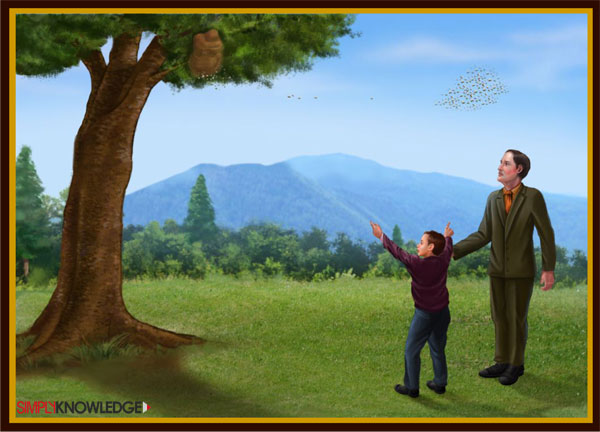

schooling and education
It was now time for Alan to step into the folds of a public school which was mandatory for children belonging to upper middle class families of professionals serving in the Indian Civil Service. Alan’s mother painstakingly researched for a public school that would accommodate Alan’s abnormality and integrate him to the social fabric of the school fraternity. Alan cleared his entrance examination and enrolled at Sherborne, a reputed public school in northwest Dorset, England as a 14 year old adolescent. The first day of school coincided with the general strike of May 1926 but Alan displayed an intrinsic toughness of character by resolving to overcome impediments and reach school. He parked his luggage with the station master at Southampton and cycled over sixty miles, finding his way by referring to a roadmap. Alan spent a night at a hotel in Blandford Forum and cycled downhill to his school situated by the abbey at Sherborne. Alan made sure that he fulfilled his target of being present on the first day of school, an accomplishment which was even published in the local newspaper! This feat astonished his peers and displayed his penchant for adhering to the rules even if one had to venture out of the zone of comfort and familiarity.
Alan’s tryst with the rigours of life at a public school brought to the fore the existence of a shell which protected his spirit from wilting due to the mockery he encountered for his idiosyncrasy, especially his shrill stammer. He was subjected to the constant admonition from his teachers on account of his shabby appearance with ink-stained fingers and blotched assignments. Alan remained a non-believer and atheist and much to the chagrin of his tutors, practiced algebra during classes held for religious instruction. He detested customary sermons and his deliberate attempts at heresy during discussions on the New Testament infuriated his form-master Ross. His futile efforts at learning Latin and Greek caused him to be at the bottom of the class. The headmaster, Nowell Smith, was alarmed by his progress and mulled over detaining him in the same form when he declared that, “If he is to stay at a Public School, he must aim at being educated. If he is to be solely a Scientific Specialist, he is wasting his time at a Public School.”
Alan excelled at Mathematics and often devised his own methods to prove theorems and also undertook a self- initiated study of trigonometric series and linear equations. Alan immersed himself in the study of Einstein’s ‘Theory Of Relativity’ and had the conviction to question the veracity of his claims and even supplemented the findings with his own well – researched calculations. His mother was proud of the scientific streak in Alan’s personality and inwardly smirked at having made the right choice with regards to his higher education.
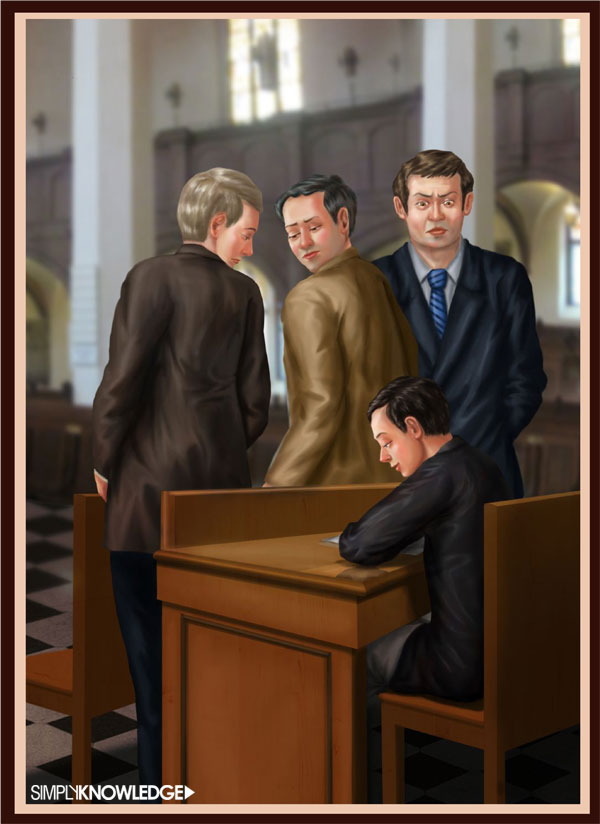

It's only love
The adolescent boys at Sherborne were forbidden to read the book “The Loom of Youth”, the sensational sensual publication, which was supposed to have a corrupting effect on impressionable minds. Alan’s sexual preference was unconventional and this secret exacerbated the heartache associated with being at the threshold of adolescence. He found himself enthralled both by chemical reactions he experimented upon and the chemistry or sparks of excitement that flew when he was in the company of his boyfriends! Alan discovered his homosexual instincts and experienced being enticed to the “filth” that homosexuality was synonymous with. The unmentionable secret drove him to deeper silences and social interaction became a formidable challenge.
Alan’s reclusive nature meant that he had a self-contained existence which suited him perfectly until he got infatuated with Christopher Morcom who was senior to him by a year. The feelings of ecstasy were responsible for Alan’s sincere effort to strike a conversation with Christopher who reciprocated a pure fondness for Alan, without any sexual undertones. Chris was Alan’s soul-mate and idol and they shared a common interest in Mathematics, Chemistry experiments and also observing celestial planets and constellations. Alan shared with Chris a fascination for the unexplored realms of the universe and told him about the impressive star-globe he ingeniously designed on account of his keen observation skills.
Alan, who was an introvert by nature, had a burning desire to emulate Christopher who was now his role model. However, lack of social conformity and effective communication skills were an impediment to Alan’s holistic growth. Starkly in contrast was Chris, an extrovert, who rose to academic success on the strength of his intelligence, social etiquettes and adherence to religious beliefs. Alan was motivated to mold his ways in order to be worthy of the genuine friendship and admiration that Chris bestowed on him. This was a turning point which inspired Alan to write legibly, communicate effectively and articulate accurately. A man is known by the company he keeps, and the positive effect of this companionship translated itself into a marked improvement in Alan’s grades and neat appearance. Christopher now aspired to follow his family tradition and secure a scholarship to Trinity College and the lure of having Chris as his companion was enough to make Alan set for himself the same goal.
However, life had other plans and the prophecy of the saying “Man proposes, God disposes” revealed itself to him. Alan was knocked with shock at the tragic and untimely demise of Christopher on account of bovine tuberculosis on Thursday 13th February, 1930. Alan visited Christopher’s home and established a lifelong relationship with his mother, Mrs. Morcom who was touched by the depth of his emotions for Chris. Mrs. Morcom invited Alan for a voyage around the Strait of Gibraltar during the Easter holidays and treated him like her own son. Alan reconciled himself to the circumstances and treasured Christopher’s photograph and letters. Alan persevered and went on to be the deserving winner of the Christopher Morcom Science Prize instituted at Sherborne in everlasting memory of his beloved friend. The Christopher Morcom Prize he received was a deeply cherished certificate and a fascinating book called “Mathematical Recreations and Essays” which dealt with simple forms of Cryptography. Alan was passionate about this branch of Science which dealt with the process of deciphering coded messages into a comprehensible form by identifying a pattern or key which was applied to each symbol. Alan was intrigued by communication of secret messages by means of encoding text or Ciphering.
The hypocritical culture of Britain in 1920s rendered homosexuality as an unmentionable and disgusting social taboo. Alan who felt claustrophobic in this stifling and oppressive atmosphere took to marathon running to vent his sexual urges which gave rise to inner emotional conflicts. Alan’s desire to complete the task from which Christopher was brutally taken away, bore fruit when he successfully won a scholarship of eighty pounds to pursue Mathematics at the prestigious King’s College at Cambridge University. Alan finally proved himself to his brother and mother who beamed with pride at his achievement. He bagged the King Edward VI Gold Medal for excellence in Mathematics on account of his grasp of abstract mathematical concepts. Sherborne had proved to be the right choice for him and at last Mrs. Turing’s prayers were answered. Alan could not relate to his mother’s obsession with the graces expected of those belonging to upper-class echelons of society and her staunch religiosity, yet, he realized she was the only one who deeply cared about his welfare.
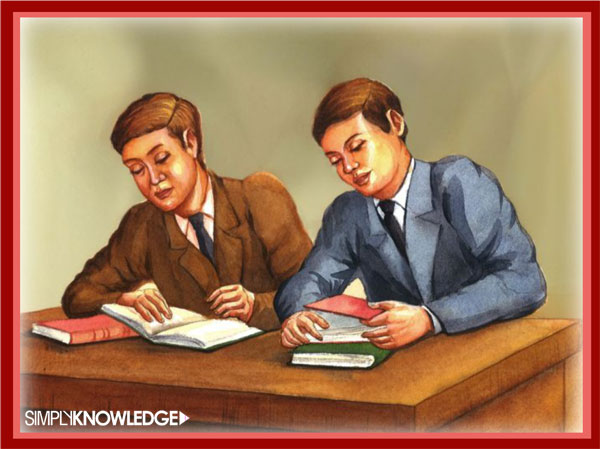

onwards march towards intellectual pursuits
The year 1931 marked the beginning of Alan’s academic career as a Major Scholar and he decided to pursue a degree course in advanced Mathematics at the prestigious King’s College. In the haloed precincts of the college, Alan found himself in the distinguished company of scholars like Hardy, Max Newman, Eddington and other pure mathematicians whose theories made text-books intriguing in his school days. Alan displayed an in-depth knowledge of mathematical theorems and sought to relate the application of concepts to ordinary life outside intellectual circles. Alan’s focal area of interest was to establish a deterministic connection between abstract mathematical suppositions and their practical applications in the physical environment of the real world. Alan was known as a solitary worker as he preferred to tackle mathematical projects through self-study rather than working as a member of a collective group. The embers of resentment due to societal branding of homosexuals as criminals, perverts and traitors of masculinity, fired Alan’s sub-conscious mind, thereby making him shy away from the public eye. This contradiction in his personality, where recognition of academic excellence required social networking skills which he lacked, led to the splitting of the core of his being. Success in academic pursuits demanded close connectivity with those who chaired high positions in the social hierarchy. However, influential people used their clout and stood on a pedestal of morality, often displaying a condescending disgust towards homosexuality. The pressure to maintain equilibrium led to his withdrawal and prevented him from getting the respect and stature, an original thinker like him deserved.
Alan was drawn towards the philosophy of Mathematics which essentially dealt with the subjective interpretation of objective mathematical concepts. By the end of 1933, Alan devoted himself to the study of scientific measurements which tended to converge around a central value and concentrated densely around a Central Meridian in a graphical representation. Alan displayed ingenuity and a versatile application of the laws of probability that led him to arrive at an explicit mathematical proof. Alan was so engrossed in his work that he failed to realize that this assertion was formerly proven and known as the Central Limit Theorem. Alan’s unconventional method of proceeding to work on a subject without reading up its history meant he could tackle a problem from a fresh perspective without being influenced by conventions. This distinguishing feature qualified his work for publication in mathematical journals. Alan refrained from involving himself in political ideologies and steered clear of any political propaganda. Alan was content being routed in his logistic universe and Max Newman, his mentor, referred to him as a ‘confirmed solitary’.
The leading academicians of King’s College, particularly scholars like J. Keynes, Pigou, John Sheppard and Max Newman, assessed Alan’s exceptional genius and unanimously elected a surprisingly young 22 year old Alan to a fellowship at King’s. This elevation carried a grant of three hundred pounds per annum consecutively for three years, with the flexibility of pursuing any field of interest at your own pace. Alan came a long way from his starting point as a student bringing home negative reports from skeptical tutors to being felicitated with a prestigious fellowship purely on merit. Alan pursued research in Group Theory and Quantum Mechanics. Alan seemed to have matured and found social acknowledgement at King’s and one of his first friends who was a fellow scholar David Champernowne. During his leisure hours, he rowed at the boat club and enjoyed cycling and skiing holidays with comrades. Alan rejuvenated himself when he was in the lap of nature and it was during a recreational trip to a lush green meadow that his thoughts drifted towards the revolutionary concept of a “Turing Machine”.
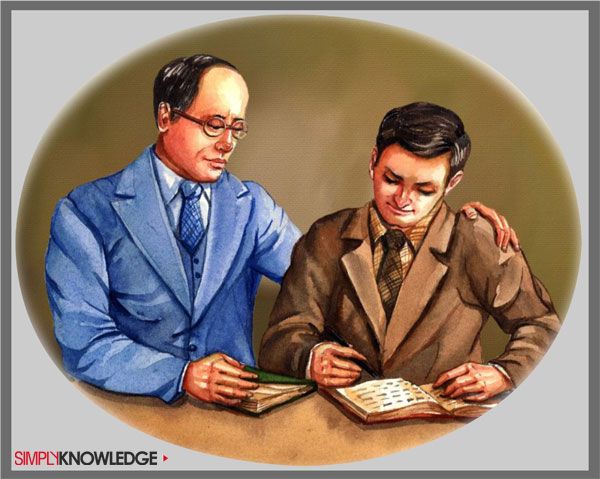

Computing a Definitive Deal with the Uncomputable
Alan Turing’s entire life can be viewed as a collective effort towards the paradox of solving the unsolvable. Alan made a thorough study of the renowned mathematician Russell’s “Prinicipia Mathematica” which is considered to be the mathematical Bible. Professor Hilbert, an outstanding mathematician of those times, extended his work to the consistency and completeness of mathematical studies. The burning issue of that era was to solve the “Decidability Problem”. Hilbert proposed to analyze whether there existed a formula or thumb-rule which when applied to any given mathematical assertion would give a definitive decision on whether it is provable or not. Alan emphatically stated that there was no such formula in existence.
Alan, whose philosophy centered at using the most efficient techniques to simplify ordinary issues, perhaps took inspiration from a typewriter owned by Mrs. Turing. In the spring of 1935, Alan conceived of a revolutionary machine with the ability to decipher finite instructions by scanning a scroll of paper or “tape” which would exemplify instructions that the machine would process. The machine could read instructions in the form of descriptive numbers and had a memory where the numbers were listed with the operation that was its counterpart. Further, Alan envisaged that this machine could be wired into different configurations or modes which he called ‘states of mind’ that determine the range of its activities. This innovative conceptualization meant that the focus shifted from the physical structure of the machine to the descriptive numbers that formed its input. The machine could then perform the task of any other machine whose descriptive number it recognized. This versatility lent a universal dimension to the scope of a Turing machine. The machine could therefore mechanize mathematical calculations quite like human clerks. Alan resolved the decidability problem by ruling out the existence of a deterministic module which could verify whether an assertion was provable or not. Alan’s path-breaking paper “On Computable Numbers with an application to the Entscheidungs problem” was published in 1936.The machine could now be assigned the function of decision making along with reading instructions, erasing symbols and writing new ones in a paper tape divided into squares. In other words, a Turing machine working in a deterministic framework could exercise a measure of free-will as it moved from one process to another!
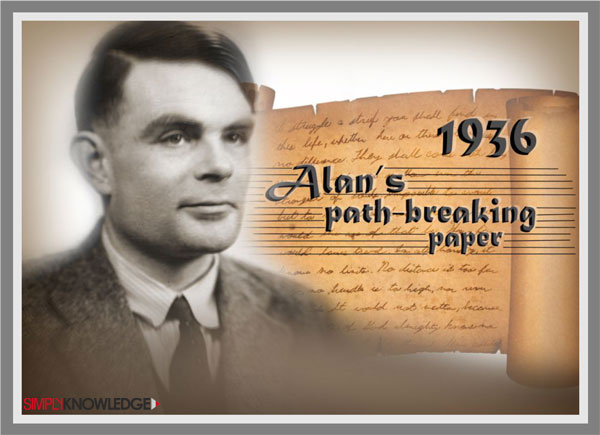

Forays into Newer Shores
In the same year, Alan’s mentor Professor Max Newman recommended his name for post-graduation at Princeton University in America where Alonzo Church had used a different approach to solve the decidability problem. Alan’s trans-Atlantic voyage took him to haloed halls of Princeton University, where he was impressed with learning alongside stalwarts like Einstein and the mathematician par excellence, John von Neumann. He completed his doctoral studies on Ordinal Logic and involved himself in the Reimann Zeta function. Alan’s combinatorial approach of synthesizing Mathematics with Physics and Electronics saw him dabble into engineering an electronic “Binary Multiplier” which was the first embodiment of the Turing machine. Alan, being an introvert, had typical problems of having to acknowledge and greet acquaintances in corridors. He found himself uncomfortable in the American social setting which required an intrinsically self- promoting temperament. He lacked the tacit art of hobnobbing with the elite intelligentsia and tired himself of living an imitation game of conforming to the socially approved criteria of sexual conduct. The conservative American milieu had no place for taboo like homosexuality in its haloed society. He found a friend in Maurice Pryce who knew him since 1929, when they both aspired to study at the Trinity College and played chess, treasure hunts and travelled together in their spare time.
Acknowledging Alan as an exceptional genius, the haloed mathematical bigwig John von Neumann endorsed his application for a Proctor Fellowship at Princeton University in the year 1937-38. In April 1938, Alan received an enviable offer to assist John von Neumann in his research, at a hefty annual stipend of fifteen hundred dollars. Alan, who always followed his heart, rejected the lucrative offer which could have served to launch a great academic career in America. Alan chose to tread back to the comforting environment at King’s where his fellowship had been renewed. This decision may have seemed irrational to most as John von Neumann’s patronage was a passport to fame. True to himself, Alan hankered after the obscure position of a pure Cambridge Mathematician in what was a simple trade-off between personal freedom and public adulation. He made the homeward journey to Cambridge on 18th July, 1938, looking forward to a career as an academician.

Fitting Newer Pieces of the Puzzle called Life
Alan casually recruited himself to a course in code breaking conducted by the Government Code and Cipher School as cryptography was a pastime during his schooldays at Sherborne. Ciphering implies any method of communicating text messages between the sender and the receiver by encoding it with symbols which are set according to a pre-determined rule, in such a manner that they are rendered incomprehensible to third parties. The art of decoding enciphered messages to intercept secret communication is known as Cryptanalysis. The volatile political environment and the British declaration of war on Germany was a fateful development which exerted a critical significance on the future course of Alan’s life. On 4th September, 1939, Alan Turing took up an assignment with Government Code and Cipher School headquarters at Bletchley Park.
British intelligence was ineffective and they depended upon Polish cryptographers to communicate to them the German strategy through coded messages. The secret activities of Polish intelligence officers rendered possible the effective decryption of German Luftwaffe used for radio communication during ‘aerial’ warfare. The failure to decipher enemy strategies in the ‘naval’ warfare led to catastrophic onslaughts by German U boats on British vessels which grappled with the problems of destruction of war supplies. However, what baffled the British Royal Navy was the fact that it operated in the background of a complete failure of wartime intelligence. The existing staff members simply could not fathom the codes enciphered on the infallible ‘Enigma’ machine used by the German Navy.
The German Enigma was a colossal machine built using a framework of complex rotor wirings connected to a series of external plug-boards in order to ensure a random setting that could be varied with each message. This meant that a cryptanalyst had to sift through a million possible solutions to arrive at the desired plain text. Speed assumed critical importance in the wartime mania, because a warning of an imminent attack lost its significance if it arrived after the deadly onslaught. As the message would yield no result if it were delivered late, the cost of inefficient cryptanalysis was a loss of precious lives and ammunition supplies. It was here that the services of pure mathematicians like Alan came into play.
The all - encompassing nature of Alan’s expertise which involved the interplay of the logical structure of the Turing Machine and the electro-mechanical operations of the binary multiplier, proved to be an asset for the government. Alan unraveled the hitherto inaccessible enigma codes and this breakthrough was the oracle that turned the tide in favour of the British Empire. The German Army attributed their losses in the War to a spurt in acts of espionage by British spies due to their blind confidence in the infallibility of the enigma. It would not be an exaggeration to assert that a German victory would have been inevitable, had it not been for the untiring, sincere efforts of Alan and his team, who worked ceaselessly without keeping track of time.
In 1940, Alan was the supreme authority who directed the development of the British Bombe – the British counterpart of the German Enigma. The British Bombe was an even superior machine that could be programmed to analyze enciphered text to detect the existence of a consistent pattern which would serve as the key to comprehend the message. Welchman, an electronics engineer, worked in tandem with Alan Turing and used his intuitive faculties and logical ingenuity to modify the ‘Bombe’, to acquire the speed so critical for its operation. Hut 8, as Alan’s workspace was referred to, had the privilege of direct patronization by Prime Minister Churchill who insisted on reading the confidential information deciphered by Alan’s team, in order to devise combative strategies. Anecdotes about Alan’s disheveled appearance and childlike naivety camouflaged his intellectual genius. He invested his income in two silver bars which he buried in a secret place in the woods, in the innocent belief that he would retrieve it after the war. This led to futile attempts at recovery and makes us wonder how a genius of his stature could lack common worldly wisdom. Turing’s idiosyncratic personality and his discomfiture in adhering to the strict hierarchical protocol that was required to be maintained in the formalist communication between the service heads and cryptanalysts, gradually led to the rise of Hugh Alexander, a former colleague who maneuvered to take charge of the organizational responsibilities which required manipulation and diplomacy.
During this period in 1941, Alan, who worked in night shifts along with his team in a spirit of camaraderie, found a genuine friend in a co-worker called Joan Clarke. Their compatibility led to them being introduced to the rest of the family members who approved of the relationship which culminated in an engagement. The couple spent quality time going for holidays together while sharing their common interests in the wonders of natural phenomenon. Alan, however, eventually backtracked from the commitment of marriage as the idea of vowing allegiance purely to fulfill a social obligation was tantamount to deceiving his partner. His sexual preference was contradictory to the established social norm and the fact that he may not be able to earnestly satiate physical desires and reciprocate his partner’s feelings led him to the decision. Alan’s sensitivity regarding Joan’s feelings was displayed in the spirit with which he communicated his decision to her without making her feel rejected as a human being.
Alan’s ability to teeter on the knife-edge of the opposing forces such as the abstract and logical, the personal and political, the rational and ethereal reflect the innate toughness of his character. This single-minded concentration helped him to handle the nitty-gritties of formidable challenges faced by the dedicated team of cryptanalysts who worked under the veil of utmost secrecy.

The Pinnacle of Success within a Trans-Atlantic Framework
The entry of the U.S. into the war, magnified the scale and intensified the devastation caused by the warring factions. Allied victory was impossible without a collaborative effort by Britain and U.S.A. On 19thOctober, 1942, Alan Turing was accredited as a member of the Joint Staff Mission in Washington, working towards a liaison of technological synchronization focusing on cryptanalytic technologies. Alan was the only British citizen licensed to examine and improvise upon state equipment directed towards the setting up of a secure hotline between President Roosevelt and Prime Minister Churchill.
It was now that Alan got engrossed in the novel concept of speech enciphering. Alan worked at the prestigious Bell labs, the pioneering telecommunication enterprise and developed an intellectually stimulating bond of friendship with Claude Shannon, an informatics engineer who shared Alan’s passion of constructing a logical machine that emulated the physiology of the brain. The kernels of the concept of Artificial Intelligence which hitherto lay dormant in Alan’s sub-conscious mind were now ready for fruition. The interlinking nature of Alan’s research into multi-disciplinary domains namely Mathematics, Physics and Electronic Engineering, culminated in a mission to achieve this unparalleled feat. Alan left New York harbour on 23rd March, 1943, embodying a dream that had the potential of revolutionizing the very existence of the human fraternity.
The mid-1940s could be rightly called the era of Reason. Humans were crossing new frontiers in the areas of Communication Science. However, the public mindset was prejudiced by moral views that branded homosexuality as a crime. The intriguing irony of it all lay in the very existence of Alan Turing, who on one hand, was sought after by the elite administrators for his intelligence, and on the other hand, felt victimized as he was forced to remain secretive about his homosexuality.
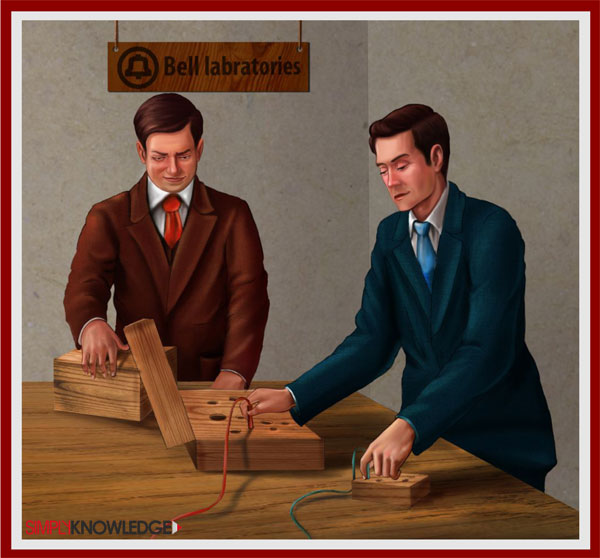

the lull after storm
The pulsating days of war induced deadlines were a thing of the past by the mid forties and Bletchley Park outgrew the ‘creative anarchy’ that prevailed in its heydays. It was now nurtured by Hugh Alexander as he took over from Alan Turing, the original creator often pushed into obscurity due to his sacrosanct commitment to secrecy. Professor Max Newman, Alan’s counsel and mentor who now worked at Bletchley Park, renewed his interest in the automation of mechanical processes which assigned decision making functions to the machine. Under his patronage, Chandler and Flower designed a marvelous piece of engineering in December 1943 which became the world’s first counting machine named Colossus.
Upon his return to a literally transformed Bletchley Park, Alan refrained from playing a proactive role in Cryptanalytic assignments. He veered towards an ambitious speech enciphering machine known as “Delilah” which literally meant the deceiver of men and was a pre-cursor to mobile phones. By early 1944, Alan worked out a shift in operations to a military base known as Hanslope Park. The immaculately uniformed officers working here, stood starkly in contrast with Alan who sported a disheveled appearance, with a torn sports jacket and unkempt nails with skin peeled off. His colleagues were startled by his shrill yelps as he squeaked delightfully each time his experiments were successful. With childlike enthusiasm, Alan was enamoured by the working of his strange machines which resembled a ‘bird’s nest’ of electronic valves. Alan rejuvenated himself by his forays into the woods, hunting for mushrooms with intriguing names like Death Cap or Amanita Phalloides. He grew diffident and defensive regarding his homosexuality and confided to Don Bayley, his assistant at the “Delilah” project. The visibly shaken Bayley was at first disgusted at such perversity though he eventually treated it as another Turing anomaly. During this phase Alan enjoyed an occasional lunch in the officer’s mess, mountain walking holidays, mushroom cooking sessions or a dance in the ballroom with ordinary folks. The fall of the war curtains in 1945 marked the end of a chapter in Alan’s life as he enmeshed himself in a synchronization of Quantum Physics, Electronic Engineering and mathematical logic.
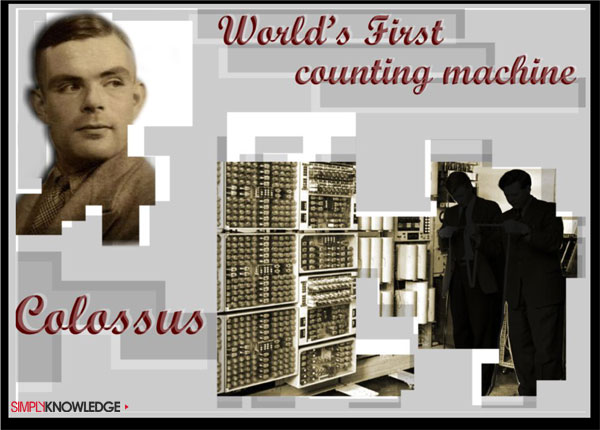

Born to Build a Brain!
In the year 1945, Alan found himself ensconced by the incredulous mission of building a brain to transform his logical conception of Turing machines into a practical reality. After a gap of nine years since he presented his paper on ‘Universal Machines’ in 1936, Alan was confident of his ability to simulate the human brain. Alan dedicated a decade of his life to scientific research during which he pivoted the creation of thinking machines like the Electronic Multiplier, the Bombe, the Delilah and to a smaller extent, the Colossus. He envisaged a machine which would embody the features of the brain in terms of the ability to decipher sensory inputs, store images and corresponding words, thereby processing information to produce output or reflexes independent of its physical formative structure.
Alan related to the vision of Charles Babbage in 1837 as he conceived of the “Analytical Engine” which was an elementary prototype of a computer. American scientists designed in 1943 the ENIAC-( Electronic Numerical Integrator and Calculator) which was a pre-cursor to the EDVAC-( Electronic Discrete Variable Calculator) proposed in 1945.These inventions sealed America’s foothold as the forerunner in the field of future technological innovation. The perceptible insecurity spurred the British out of complacency and Alan’s vision received an impetus in the form of political and economic patronage.
In June 1945, Alan was appointed as a Temporary Senior Scientific Operator at the National Physical Laboratory headed by Sir Charles Darwin, the grandson of the theorist of evolution. Alan was hired at a salary of 600 pounds per annum by his boss J. R. Womersley, Superintendent of the Mathematics Division at the NPL. Though Alan found his boss lacking in the proficiency expected by virtue of his high position, the latter possessed skills of social networking and catalyzed the grant of approvals required to build the British computer. Alan’s amazing conception revolved around having a centralized logical control which was the pre-cursor to what is now known as the central processing unit. This would be programmed in such a manner that it could embody one of the many configurations wired into it at any given time. The machine would have an in-built memory bank with a storage capacity enough to accommodate a multitude of instruction tables. This visualization is relatively plausible to the present generation for whom computers are an integral part of life. But in the post-World War II era, almost sixty years ago, it was a revolutionary concept and could be understood only by the intelligentsia.
The machine would use sophisticated electronic circuitry to scan the instruction tables and assemble the necessary data corresponding to the requirement at a pulse rate of a millionth of a second per command. Alan proposed the use of mercury delay lines and conditional branching techniques which enable the machine to modify the program currently set up and move to the next configuration in order to make it a marvel of speed and efficiency. Alan pioneered the concept of shifting the onus from the physical characteristics or hardware to the logical programming or software, justifying his stature as the inventor of Computer Science. He wrote “abbreviated code instructions” which is akin to writing out detailed programs. The wizard directed the designing of schematic circuits based on digital technology with a provision to support external devices on the additional plug-boards attached to the machine.
This revolutionary machine could emulate the functions of human computers who laboriously carried out calculations at Bletchley Park. Alan explained, “The idea behind digital computers may be explained by saying that these machines are intended to carry out any operations which could be done by a human computer.” The “Automatic Computing Engine” or ACE could in fact work at a scale equivalent to 10,000 human computers. Alan visualized the rise of the computer industry which would require computer programmers and engineers almost forty years ahead of its time, as the machines would require computer operators, software programmers, hardware engineers and give rise to a whole new arena of employment generation. Alan was appointed to the “Order of the British Empire” in mid- 1946 for his wartime services. On 15th August, 1946, in a landmark achievement for its promoters, the treasury sanctioned ten thousand pounds for the elementary version of the ACE machine.

There’s Many a Slip between the Cup and the Lip
The above saying had an almost prophetic implication in the practical construction of the ACE machine. The major impediment faced by Alan was the rigidity of the bureaucratic framework headed by well- meaning but rather passive officials who lacked initiative. The formalist mindset fragmented the work into logical research and practical engineering. The fact that Alan dared to venture out of his stereo-typical role of a theoretical designer, in order to collaborate with electrical engineers, was considered an anomaly. The stringent adherence to formal paperwork or conventional permission seeking for requisition of equipment was ill-suited to Alan’s temperament. The ethos of NPL was starkly at odds with Alan’s functional style of ”creative anarchy” which worked at Bletchley due to explicit patronage of Prime Minister Churchill. Alan was irked by the cumbersome procedure of having to participate in Committee meetings where decisions were taken on the basis of political considerations rather than an objective understanding of ideology. The conservative mindset of superiors lent a systemic inertia to the project. Alan attributed the delays to an ambiguous structure of authority, where superiors often undermined his potential and capability.
Professor Max Newman who resigned from Bletchley Park and was currently appointed as Professor of Pure Mathematics at the Manchester University kept himself abreast of the latest developments in the field of logical machines. He was the first to read Alan’s paper on Turing machines in 1936 and exhibited a sustained interest in this promising field. He embarked on the construction of another computing machine in February 1946, which was funded by a Royal Society grant of 35,000 pounds. Alan in the meantime, supervised the construction of the ACE machine and used his leisure hours to continue his practice as a long distance runner and joined the Walton Athletics Club at Teddington. He continued writing to his mother who was proud of the fact that Alan was entrusted with projects of immense national importance.
However, inevitable delays occurred on account of miscommunication and incipient rivalries of the NPL and the computer department at Manchester University as both sought the expertise of F. C. Williams, an electronics expert, to engineer their respective machines. Williams’ choice of cathode ray tubes contradicted with Alan’s preference for mercury delay lines for data storage. After much negotiation, the task of engineering the ACE finally fell into the lap of M. V. Wilkes, an engineer from Cambridge, who was influenced by the design of the American machine EDVAC, where hardware could precedence over software. The frictional link between Wilkes who had now begun to construct another computer at Cambridge University and Turing’s ACE project at the NPL was formally broken in April 1947. He was replaced by a certain H.A. Thomas who specialized in the industrial application of electronics and had no experience whatsoever in the field of the pulse or digital techniques. By this time, Harry. D. Huskey, who was a member of the American ENIAC team, was invited to spend a year on the ACE at NPL. It is well known that too many cooks spoil the broth. The cumulative effect of having too many project-heads was ambiguity in fixing responsibility and a duplication of expertise. Its’ trickle-down effect on the ACE project was that Alan’s initial conception of a progressive machine was soon subjected to too many alterations which digressed from the original plan.
Alan was sponsored by the government as the only British delegate to a ‘Symposium on Large Scale Digital Calculating Machinery’ held on 7th January, 1947. The highly progressive ACE project was Alan’s brainchild but was metamorphosed due to a whimsical lack of confidence the authorities placed in his leadership. The haphazard execution is evident from their pursuit of Williams and Wilkes even though it meant a reversal from the initially envisaged and approved proposal. Alan felt sidelined and alienated leading to his withdrawal which was expressed as request for a year’s sabbatical from duties at NPL in August 1947.

Back to Square One
Alan faced a rough patch in the personal sphere as his father passed away on 3rd August, 1947. Wealth in Alan’s view was merely the means of affording an ordinary existence. Alan, known for his generosity, remitted to his brother John, the additional four hundred pounds he inherited from Mr. Turing in lieu of the money spent on John’s solicitorship twenty years ago.
Alan officially resumed his fellowship at King’s on 30th September, 1947. Robin Gandy, an old friend and colleague, in whom a nonchalant Alan confided about his homosexuality, was liberal in his acceptance, and a lifelong bond of mutual admiration blossomed between the two. Alan enjoyed regaining his old life at Cambridge and true to his unpretentious and earthy childlike nature, acquired a toy steam engine to compensate for his frugal childhood. Alan, his friends Robin Gandy and Don Bayley spent many an enjoyable afternoons playing with his toy engine.
Alan continued to be engrossed in artificial intelligence. He felt that just as the human mind lends itself to learning concepts it practices continually, a machine can also display the learning skill if the operation is repeated. Efficiency increases when a machine repeatedly modifies the initial input in order to perform the task at hand. Intelligence then was something that could be learnt or acquired by practice. Alan advocated that the intelligentsia need not flaunt their grasping power and feel superior to the masses, as intelligence could be created simply by understanding the circuitry of neurons in the human brain. This meant that Alan sought to demystify the enigmatic intelligence flaunted by charlatans, new priests, magicians and technocrats by defining it as something within the grasp of a machine.
From Alan’s perspective “the art of simulation of the brain’s activities” was an exhaustive definition of intelligence. He delved upon the fact that the human brain develops as a result of training and the cumulative effect of external stimuli like exposure to music, art, culture and languages. Alan’s prophetic declaration was that robotic machines could emulate human activities like playing football, climbing stairs, driving a car and the like. These controversial ideas were met with skepticism and mockery. The intelligentsia composed of neurologists, philosophers and scientists refuted his ideas as his electronic brain was incapable of enjoying a hot cup of coffee, crying when a dear one passed away, feeling demoralized upon losing a game or even writing poetry!!! Their contention was that human instincts depended upon the cumulative effect of neurons and hormones. Alan was featured in talk shows on radio and was invited to contribute articles in journals on the subject of Intelligent Machinery.
Alan was particularly intrigued by the concept of playing chess with a machine. He collaborated with his friend David Champerone to devise a chess program called “Turochamp” which entailed a systematic plan of capturing followed by the machine to enable it to outwit a human opponent. The courts and corridors of King’s were areas where Alan scouted for suitors who would satiate his sexual prowess and found a lover, Neville Johnson, a third-year Mathematics student. An ordinary affair ensued with Neville joining Alan and his close friends in an occasional game of poker. Alan went for a holiday to Switzerland with Neville in the summer of 1948 where they spent time cycling together as they trod glaciers and enjoyed mountaineering.

The Quest between Nature and Nurture
A thorough research on the subject of intelligence brought Alan to the center of the eternal debate between Nature and Nurture. His viewpoint was that genetic or natural intelligence could be enhanced by training methods adopted during childhood. In his opinion, the human cortex was akin to an unorganized machine. The depth of Alan’s perception can be gauged by the fact that he attributed the holistic development of the brain to three factors, namely intellectual capability, genetic or evolutionary endowment and cultural conditioning. There was an element of harmony in this arena of evolution which rivaled the mind-splitting dichotomy between Alan’s noble academic research and his apparently stigmatic, disgusting and perverse sexual reality.
In the Turing schemata a machine could qualify to be considered intelligent if it acquired the ability to modify its pre-determined functional pattern in accordance with current conditions. This is similar to a machine deviating from the current mode and giving you choices of “SAVE” or ‘’QUIT”, or displaying when you need to recharge the battery, or the simple “Please wait”…. The matching of passwords, the assembling of key words and using an algorithm to present the required result quite like the search engines we are familiar with today, were abstract concepts in the mind of a genius. In this context, the 21st century, where ‘googling’ is child’s play, is ridden with innovations in fields of robotics, computerized surgical equipment, defense radars, aeronautics and communication which have revolutionized our lives. Even hundred years after his birth, newer experiments bring out hitherto unknown dimensions of the all-encompassing nature of the kernels of enquiry that first sprouted in the fertile mind of Alan Turing.
The one year sabbatical from the NPL now came to an end. On 28th May, 1948, Alan submitted his resignation from the NPL to its director Darwin who was bewildered and felt betrayed. It was now time to chart a new course, rise to newer heights or fall to darker depths. Meanwhile, Professor Max Newman who was closely associated with Alan since the start of his academic career, carved out the post of Deputy Director of the Royal Society Computing Library at Manchester University especially for him. Alan was enamoured by the prospect of working on the computer and accepted the post. On 21st June, 1948, F.C. Williams, who also worked at Manchester University, demonstrated the working of his computing machine. He had independently constructed the world’s first electronic stored program computer credited with practically demonstrating the process of finding the highest common factor of an integer. Though it used cathode ray tubes for storage and operated at one-tenth the speed of the ACE, it had an edge over the ACE which was merely a dream not yet transformed into reality.
Alan found the tables turned against him as he was now required to foster the task of logically programming William’s machine which was a complete reversal of the NPL set up. However, the lure of working on a computer and being paid an attractive annual allowance of 1400 pounds made him take up the task of fostering the new machine. Alan who believed in the philosophy of live and let live was transparent in his approach towards life. He either overwhelmed comrades with his unwavering commitment or shoved away judgmental ones who smirked at his idiosyncratic and non-conformist stance. He was a regular visitor to the home of Professor Max Newman who always welcomed him warmly. Alan continued long distance running and raised eyebrows by adding a motor to his bicycle rather than using the officially sanctioned car! Alan visited Neville John at Cambridge every few weeks and with childish enthusiasm enjoyed playing treasure hunt. Alan wrote the “Programmer’s Handbook” for the new computer at Manchester which was largely considered William’s baby and named “Mark 1”.
The pilot ACE was completed at NPL in November 1950 with only a cursory mention of Alan Turing’s ingenuity. Alan was said to have been appointed at the NPL purely on merit as author of the paper ”On Computable Numbers with an Application to the Entscheidung Problem” in 1936 which served as the basis of computing machines. This was the only mention of Alan Turing at the official opening ceremony. The bureaucracy conveniently overlooked his immeasurable contribution as the first person to visualize a working computer. Perhaps, Alan’s reluctance in being pushy towards the execution of his design and his disdain of flattering superiors to gain recognition was responsible for him being sidelined. By November 1950, Alan was pushed into oblivion and was not elevated to his rightful pedestal as the “Father of Computer Science”.

Cybernetics – A Pursuit of Passion
Cybernetics or the science of studying the intelligence of a machine, emerged as the most intriguing area of research owing to the efforts of luminaries like Alan Turing, Professor Max Newman, Professor Jefferson who held a chair on Neurology in Manchester, and American experts like John von Neumann and Norbert Wiener. Alan was consumed with thedesire to unravel the mystery by which the intellect or mind took birth in the recesses of the brain. This implied, Alan attempted to design an operational definition of thinking which collated the disciplines of Science and Philosophy, whereby the reflexes of the brain dominated its physical embodiment as a mass of neurons and tissue. His path-breaking paper “Computing Machinery and Intelligence” was published in October 1950 in the philosophical journal Mind.
In the summer of 1950, Alan tuned into the idea of settling down by buying his own home and ending the dreariness of living out of a suitcase. The house “Hollymeade” in the town of Cheshire, South Manchester, was his haven of peace where he enjoyed the company of his friendly neighbours the Webbs. He would delight in communicating with their 2 year old toddler Rob, excited by the prospect of unraveling the awakenings of the brain into first spurts of speech. Alan employed the services of a housekeeper to enjoy the convenience of an orderly environment without having to put up with the interference and demands of a live-in partner. Alan had a roving eye and solicited men inconspicuously lurking in the subways, pubs and hostels in order to seek sexual gratification. As homosexuality was legally a criminal act, homosexuals were forced to live in shame. The danger of being charged with indecency in case of being caught red-handed was constantly on their minds. The very thought of unconventional sexual preferences defied all norms of respectability in the conservative, formalist English society.
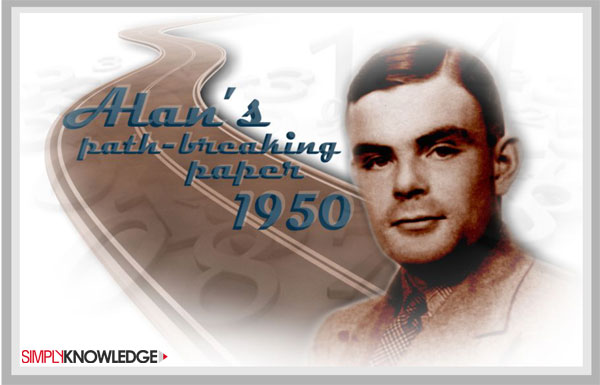
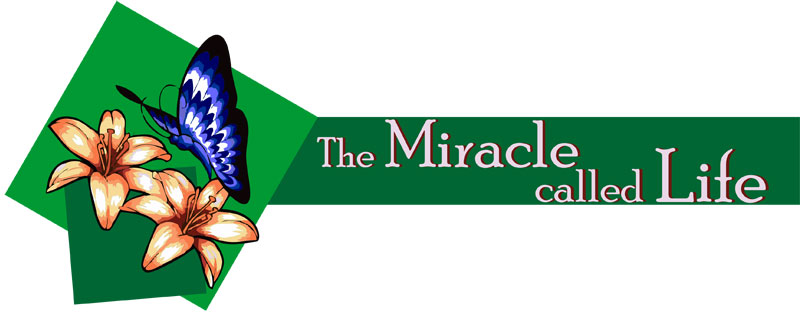
The Miracle called LIFE
In early 1950, Alan Turing was fascinated by D’Arcy Thompson’s (a Scottish biologist, mathematician, and classics scholar) book on Growth and Form. This was an interest of his schooldays when he daydreamed about watching daisies grow! Alan at the prime age of 40, amalgamated his theory of computable numbers, his cryptanalytical code breaking and the logical programming of machines to play the stimulating game of “treasure hunt”. In this context ‘Treasure ‘ referred to the secrets buried in simple natural phenomena that we come across in our day to day lives. Alan wanted to explore the treasure of knowledge that was nascent in the secret of growth. Alan was fascinated by ‘embryology’- a discipline that analyzed the puzzle of genetic encoding. Alan studied that genes are storehouses of information clustered within cells. These cells dynamically interact with each other and diffuse into millions of fragments that organize themselves into symmetric or asymmetric patterns. The embryo diffused or regenerated itself when its equilibrium was disturbed. This is similar to ripples being created in stagnant waters when we throw a stone that disturbs the status quo.
The focus of his research was to discover how the delicate equilibrium maintaining the chemical composition of the cell was destabilized, thereby catalyzing the process of growth and regeneration in an embryo. This process of metamorphosis in an embryo, also known as morphogenesis, required the synthesis of Mathematics, Chemistry Biology and Philosophy. Alan began to undertake the task of demystifying the spiral pattern on a fir cone which he discovered represented the mathematical concept called Fibonacci series (0,1,1,2,3,5,8,13…..).The regeneration of the Hydra which could grow a new head or tail from any chopped off fragment also fascinated him. Alan then went a step further and studied the rationalism behind asymmetrical blotches or lumps on animal skin like the patches of black we see on cows, or the pattern in placement of leaves on a stem.
On the 15th of March, 1951, Alan young at 40, was nominated as Fellow Of The Royal Society, an honour which drove an incredulous Mrs. Turing into the realms of ecstasy. Alan’s relationship with his mother had been warm for even though she annoyed him with her penchant for perfection in mannerisms and her religiosity, she was involved in his growth. She was deeply concerned about Alan’s well-being right from childhood.
The pendulum of Alan’s life swung between the opposing forces of the abstract and the logical, the imaginary and the practical, the supernatural and the rational. His consciousness gently oscillated between the contradictory spheres of personal sexual preferences and established societal codes. Alan was one of the first scholars to use a computer for research and often laboriously worked through the night at the computer laboratory, emerging at dawn excitedly, waving out prints of the symmetrical patterns on the pineapple or a giraffe’s spots and the like. So patient was he with the machine that observing him operate the machine in the spirit of affinity was akin to watching a musician gracefully playing the piano. He programmed the machine to store the sequence of his experiments in its memory like one would expect of an electronic secretary! Alan’s paper on morphogenesis was received by the Royal Society on 9th November, 1951, as a part of its biological series. This was an amazing accomplishment and he looked forward to celebrating Christmas in a relaxed manner. Alan, who never forgot to buy Christmas presents for his loved ones, invested a lot of time in thoughtfully selecting the appropriate gifts.

Winds of Change Blow Away the Sand Beneath Our Feet!
It was around this time in early 1952 that Alan Turing chanced upon spotting Arnold Murray, a vivacious unemployed dreamy youngster who was out on probation after being involved in a petty theft. Alan was moved by his plight and aroused by the striking fascination with which he responded to Alan’s work on the ‘Electronic Brain’. Arnold Murray, who aspired for connections with the intellectual elite, felt privileged to have broken class barriers when he was invited for dinner to ‘Hollymeade’. They spent a pleasurable night which satiated Alan’s physical longings. Much to his chagrin, Alan discovered the loss of some money from his wallet and wrote to Arnold expressing a wish to nip their ‘affair’ in its bud. Arnold refusing to accept the rejection on its face - value, turned up at Alan’s house looking dejected and swore that he had no role to play in the missing currency. Alan relented and lent him another seven pounds as he claimed to be in debt. A bolt from the blue struck Alan when he was horrified to realize that his house had been burgled on the 23rd of January. The monetary loss attributed to burglary was a petty sum of 50 pounds but it had a tormenting effect on Alan’s sanity as he perceived it as a foreboding signal of impending doom.
Alan naively reported the crime to the C.I.D. and consulted a solicitor who advised him to snap ties with the main suspect Arnold. Alan wrote to Arnold who pleaded his innocence. After the spurt of anger subsided, they ended up having an erotic sexual encounter. Arnold confided to having boasted about his association with the upper-class Alan to one of his acquaintances who impulsively schemed for the robbery. A repentant Arnold emphatically refused to participate in the scornful act of betrayal. Alan fabricated a story and passed on the lead to the cops in the immature judgment that the focus of enquiry would be the burglary rather than the homosexual encounter. He felt that allowing the culprits go scot free would be tantamount to subjecting himself to blackmail and future crimes. A naïve and unpretentious Alan could not perceive that his homosexuality, which was still illegal in Britain, would be the paramount concern. Alan’s liberal mindset could not grapple with the consequences of his prosecution if he was proven guilty under the charge of “Gross Indecency contrary to Section 11of the Criminal Law Amendment Act of 1885”. Alan extended his hospitality by offering glasses of wine to the cops and even wrote a lucid statement revealing the details of the nature of his affair. He even spoke of the prospective legalization of homosexuality in the near future.
Alan’s closest friends were privy to his homosexuality, but the formidable task of confronting his mother and brother lay ahead of him. Alan wrote to his brother John Turing who was aghast and disgusted at the disreputable revelation. Nevertheless, he rushed to Manchester and consulted a solicitor to extend support to his brother. Next he made a trip to his family home at Guildford to confront his mother who hitherto wore blinkers as far as it pertained to his sexuality and atheism. In spite of being distressed by the disclosure, Mrs. Turing empathized with her son and did not allow the truth to estrange her from Alan.
Max Newman, whom Alan looked upon as a father figure, and Hugh Alexander were called upon to vouch for Alan’s integrity and character. Max Newman met the Vice-Chancellor of the University to safeguard Alan’s position in academic circles. Somewhat reassured, Alan continued his research in spite of the demands on his time made by the criminal proceedings. Alan’s innermost core was skeptical about his imminent arrest though at the outset he feigned sangfroid. The verdict was delivered on 31st March, 1952, in the court of Judge Mr. J. Fraser Harrison. Alan pleaded guilty and was arrested to be released on a bail of fifty pounds. Alan’s honours, the title of Order of the British Empire, the service he rendered to humanity on account of his research helped him to evade arrest but with the stringent condition of subjecting himself to chemical castration to cure him of his homosexuality. Arnold Murray was understood to be influenced by the clout of an older upper-class Alan who manipulated him into perversion.

Beggars Cannot be Choosers…
Alan was left with no choice but to subject himself to doses of the female hormone Estrogen in order to check his libido by rendering him impotent. This form of treatment involving chemical castration led to a ‘gynaecomastia’ or a growth of breasts! He was on probation for a period of one year and his movements were tracked.
Alan was automatically barred from entering the U.S. as he joined the ranks of those who had criminal records. In 1952, the British Government introduced the concept of “Positive Vetting’ or the practice of investigating the character or ability of a person engaged in sensitive work involving state secrets. This had a direct implication in terms of withdrawal of Alan’s clearance for cryptographic assignments. The government believed in the theory that defined homosexuality as a perversity often characterized by an unstable emotional balance and a mind which can swerve towards indiscriminate perilous acts in moments of tribulation. This meant that homosexuals were easy targets for blackmailers interested in extracting ultra-secretive documents of the state.
Alan went to Norway in mid-1952, lured by the prospect of “men only” dances and was enamoured by Kjell, an attractive Norwegian lad. This highlighted the fact that his spirit remained unbroken and he withstood the trial displaying the same resilience with which he nonchalantly faced the scornful attitude of his peers and tutors at Sherbone. Alan went to Greece for a short holiday in 1953 which raised suspicion and frayed the nerves of security officers. Kjell, his acquaintance from Norway came to visit him but it led to a crisis as they were not permitted to meet each other.

It Cannot Rain Forever
Alan continued with his in - depth research in the complex theory of morphogenesis. He now preferred working from home, where he set up a small laboratory, studying different forms of marine life, beginning with the mono-cellular Radiolaria. Any visitor to his home was greeted with an overflowing stack of letters on the latest developments in the fields of logic which physically and metaphorically filled his world!
Alan extended his study of mind and matter, taking interest in the psychology of the mind. He visited a psychoanalyst Franz Greenbaum who was open to the idea of accepting his sexual instincts as a part of his personality. Alan sought to delve deeper into his own sub-conscious mind and went in for a dream analysis. Dreams they say are a window to the soul. Alan was surprised to note that though his current relationship with his mother was cordial, his childhood mysteriously reflected undercurrents of hostility, probably due to a judgmental attitude on Alan’s failure to meet up with social courtesies. Alan made peace with his past that was marked by being raised with an absentee father who provided for the family but perhaps alienated the kids from him. Though Alan falsely accused his brother for a lack of sympathy during his trial, he genuinely felt his mother was an ally and a spirit of friendliness pervaded their relationship. Alan’s probation period ended in April 1953 and he rid himself of the hormonal implant in his thigh. Alan enjoyed reading the novel “Finistere” which described the complexity of a homosexual relationship of a teenage student with his teacher. Homosexuality was a social taboo, a stigma which threatened the morality of society at large. The protagonist in the novel tragically committed suicide as he was pushed to brink by those who questioned the sanctity of his value-system.
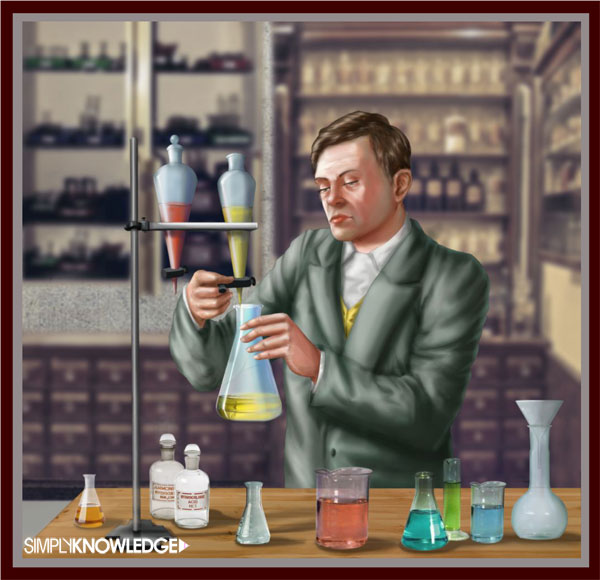
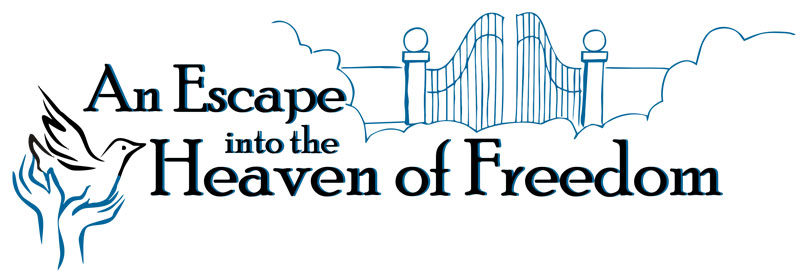
An Escape into the Heaven of Freedom
On the evening of Tuesday 8th June,1954, Alan Turing was discovered dead with froth in his mouth, lying beside a half-eaten apple by his visibly devastated housekeeper. He had supposed to have expired an evening before. The coroner concluded that it was a deliberate act of self-annihilation in an impulsive moment as one can expect from people of his “type”. The apple had probably been dipped in the deadly potassium cyanide that he often used for his experiments. This venomous potion was enough to guarantee a swift transition from the real to the abstract world. Mrs. Turing vehemently denied the possibility that her son could end his life in this cowardly manner. Alan perhaps displayed his sensitivity to his mother’s emotions and did her a service by dramatizing his death to add an element of intrigue and ambiguity. The apple was not analyzed and so there was scope to give Alan the benefit of doubt. His mother’s contention was that his unkempt nails and a blatant disregard for cautious hygiene would have led to traces of the cyanide being embedded in them, and this was ingested when he ate an apple which was his daily routine before he retired for the day. The fact that he had theatre tickets purchased for the near future and had even booked the computer lab for the night of 8th June added to the mysterious circumstances of his death that baffled his friends and psychoanalyst alike.
Alan Turing’s cheery disposition masked any thoughts of death that lurked behind his mind. The only factor that takes our chain of thoughts to that end is the fact that he had made a new will on 11th February, 1954, barely three months before his death. The trial was behind him and he faced it with stoic resilience having the courage to speak up and accept the bitter truth rather than resorting to the crutches of hypocrisy. Perhaps the burden of carrying secrets of the state and the sensitive nature of his work infringed upon his personal freedom and this dichotomy seemed too heavy to bear. The fact that he could be arrested any time for events that made up his past and be turned into a scapegoat was enough to push him to the brink. The social stigma and condescension towards homosexuality led to him to find salvation in the thought that death was a final escape from the tormenting reality of his life. Alan Turing was cremated on 12th June, 1954, in the presence of his mother and brother.
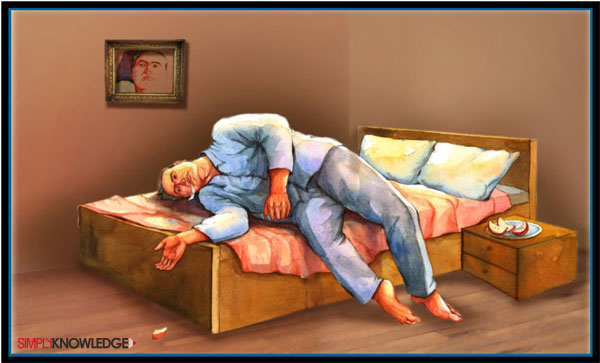
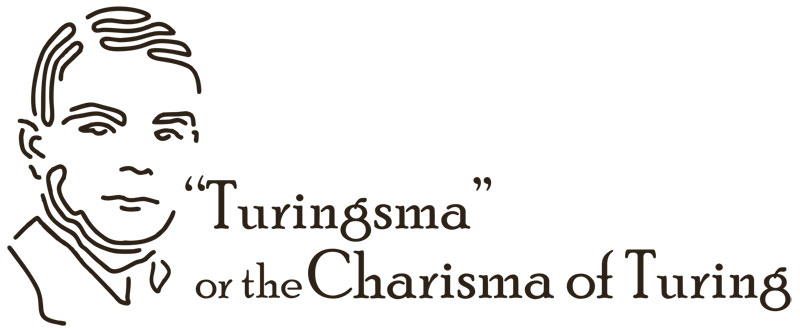
“Turingsma” or the Charisma of Turing
In June 2009, the British Prime Minister Gordon Brown made a statement of apology for the trial to which Alan Turing was subjected, when all his life this extra-ordinary human continued to seek the ordinary pleasures of life. The legacy of Alan Turing pervades our lives when we try to unravel the enigma surrounding the proliferation of life.
The interactive gadgets that lend an illusory effect to our lives through the “online” revolution where long distance communication via Skype, online shopping in a virtual market, online tutoring and even medical consultations have blurred the line between the abstract and the real. The enigmatic saga of Alan Turing leaves us with a sense of disillusionment and deep regret of this act of betrayal on the part of the Government machinery which rallied around his intelligence at the peak of war and shoved him into the depressive dreariness of criminality for no fault of his. The anomaly really lay not in the realms of the homosexual mind but in the conditional prejudices of society at large. The paradoxical act of self-annihilation from the genius who mastered the art of creation, reflects the heavy price a law-abiding citizen paid in todays distorted world. The loss is magnified manifold if we ponder upon the collective loss to humanity on account of the premature end to a genius researcher of his stature. Alan Turing lives on as the epitome of truthfulness and ingenuity in the minds of the future generation…
Next Biography








